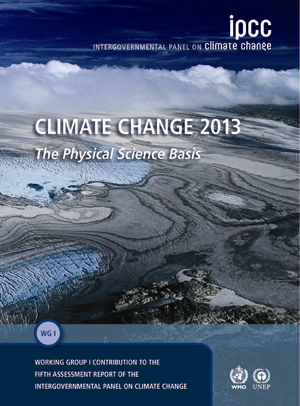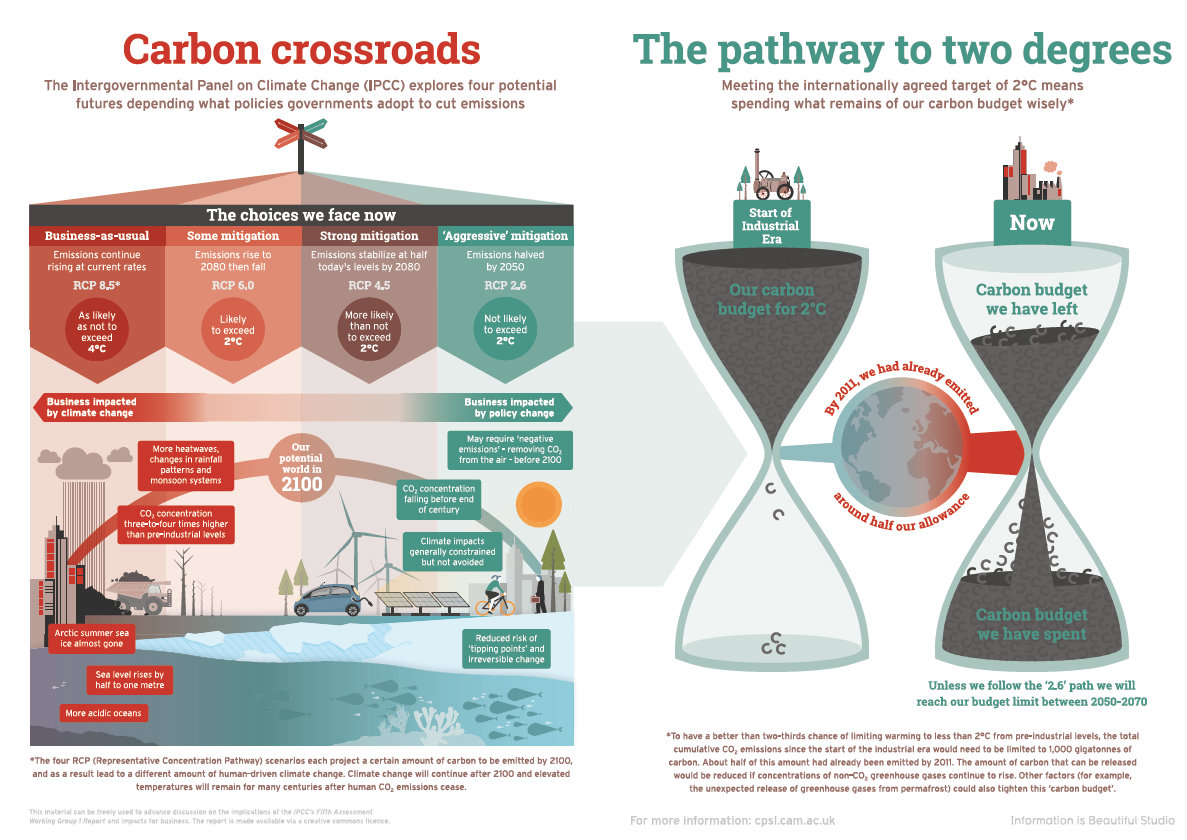Blog written by Jonah Busch and cross-posted from the Center for Global Development (CGD, USA). This quick summary of the key messages from the report is useful for researchers, teachers, activists and students.
The Intergovernmental Panel on Climate Change (IPCC) is an extraordinary undertaking. Hundreds of scientists volunteer to put their professional lives on hold for months or years at a time. They synthesize the findings of thousands of peer-reviewed scientific articles to provide policymakers and the public with the best current scientific understanding of climate change. Thousands more experts review and provide comments on sections of the report (I was one of these thousands).
an extraordinary undertaking. Hundreds of scientists volunteer to put their professional lives on hold for months or years at a time. They synthesize the findings of thousands of peer-reviewed scientific articles to provide policymakers and the public with the best current scientific understanding of climate change. Thousands more experts review and provide comments on sections of the report (I was one of these thousands).
On Friday 18th October in Stockholm the IPCC released the first of a series of four reports comprising its Fifth Assessment Report (AR5), documenting the “physical science basis” of climate change. You won’t see any direct mention in this report of fires, floods or hurricanes; those topics will be covered in a companion report on “impacts, adaptation and vulnerability” to be released in March. A report to be released in April on “mitigation of climate change” will include renewable energy, energy efficiency and reduced deforestation. And a synthesis report will be released next October.
Here are twelve takeaway messages from Friday’s IPCC report. (The titles are mine; the quoted text and italicization is taken directly from the report’s 36-page Summary for Policymakers).
1. Climate change is undeniably occurring.
“Warming of the climate system is unequivocal, and since the 1950s, many of the observed changes are unprecedented over decades to millennia. The atmosphere and ocean have warmed, the amounts of snow and ice have diminished, sea level has risen, and the concentrations of greenhouse gases have increased.”
2. We’ve never seen anything like this before.
“The atmospheric concentrations of carbon dioxide (CO2), methane, and nitrous oxide have increased to levels unprecedented in at least the last 800,000 years. CO2 concentrations have increased by 40% since pre-industrial times, primarily from fossil fuel emissions and secondarily from net land use change emissions.”
3. Humans are the cause.
“Human influence on the climate system is clear. This is evident from the increasing greenhouse gas concentrations in the atmosphere, positive radiative forcing, observed warming, and understanding of the climate system. This evidence for human influence has grown since [The IPCC’s Fourth Assessment Report, released in 2007]. It is extremely likely that human influence has been the dominant cause of the observed warming since the mid-20th century.”
4. Climate change will continue.
“Continued emissions of greenhouse gases will cause further warming and changes in all components of the climate system. Limiting climate change will require substantial and sustained reductions of greenhouse gas emissions.”
5. Get ready for more heat waves…
“It is very likely that heat waves will occur with a higher frequency and duration.”
6. …more and bigger storms…
“Extreme precipitation events over most of the mid-latitude land masses and over wet tropical regions will very likely become more intense and more frequent by the end of this century, as global mean surface temperature increases”
7. …less ice and snow…
“It is very likely that the Arctic sea ice cover will continue to shrink and thin and that Northern Hemisphere spring snow cover will decrease during the 21st century as global mean surface temperature rises. Global glacier volume will further decrease.”
8. …higher sea levels…
“Global mean sea level will continue to rise during the 21st century. Under all RCP scenarios the rate of sea level rise will very likely exceed that observed during 1971–2010 due to increased ocean warming and increased loss of mass from glaciers and ice sheets.”
9. …and acid oceans.
“The ocean has absorbed about 30% of the emitted anthropogenic carbon dioxide, causing ocean acidification…Further uptake of carbon by the ocean will increase ocean acidification.”
10. These changes will be with us for a long time.
“Cumulative emissions of CO2 largely determine global mean surface warming by the late 21st century and beyond. Most aspects of climate change will persist for many centuries even if emissions of CO2 are stopped. This represents a substantial multi-century climate change commitment created by past, present and future emissions of CO2.”
11. How bad things get is up to us.
“Limiting the warming caused by anthropogenic CO2 emissions alone with a probability of >33%, >50%, and >66% to less than 2°C since the period 1861–1880, will require cumulative CO2 emissions from all anthropogenic sources to stay between 0 and about 1560 GtC, 0 and about 1210 GtC, and 0 and about 1000 GtC since that period respectively. These upper amounts are reduced to about 880 GtC, 840 GtC, and 800 GtC respectively, when accounting for non-CO2 forcings.”
12. It’s irreversible* (but there’s an asterisk).
“A large fraction of anthropogenic climate change resulting from CO2 emissions is irreversible on a multi-century to millennial time scale, except in the case of a large net removal of CO2 from the atmosphere over a sustained period.”
Two weeks ago I joined CGD as a Research Fellow. I am thrilled to join colleagues who follow the science of climate change closely, and who have made the case for years that climate change and the challenges of development are inextricably entwined. The impacts of climate change hit the poor first and worst (see publications by Bill Cline, here and David Wheeler, here). Most emissions have historically come from rich countries, coloring how finance for adaptation to climate change should be transferred (see policy paper by Nancy Birdsall and Michele de Nevers, here). However, the profile of emitting countries has changed rapidly so that mitigating climate change requires new approaches to cooperation between rich and poor nations, as suggested in a new book by Arvind Subramanian. Nancy Birdsall and Bill Savedoff have promoted making foreign aid more efficient and accountable by paying for development outcomes rather than inputs (see their book, “Cash on Delivery,” here). Applying the same principle to performance-based payments for reducing tropical deforestation could provide one of the most cost-effective, politically accepted methods to stabilize the climate, as described here by Frances Seymour.
You can expect to see more on climate and forests from CGD in the coming months. For now, here is one final takeaway from the IPCC report—a message to skeptics seizing upon a slow-down in the rate of increase in surface temperature in the short-term as an excuse to ignore larger trends:
13. Keep your eye on the long-term trends, not on cherry-picked time periods.
“Due to natural variability, trends based on short records are very sensitive to the beginning and end dates and do not in general reflect long-term climate trends. As one example, the rate of warming over the past 15 years (1998–2012; 0.05 [–0.05 to +0.15] °C per decade), which begins with a strong El Niño, is smaller than the rate calculated since 1951 (1951–2012; 0.12 [0.08 to 0.14] °C per decade).”
________________________________________
The IPCC report is over 2,000 pages. It’s an impressive scientific document but not the most accessible – with that in mind www.climasphere.org have produced an infographic summarising the main conclusions from the report (PDF here):

